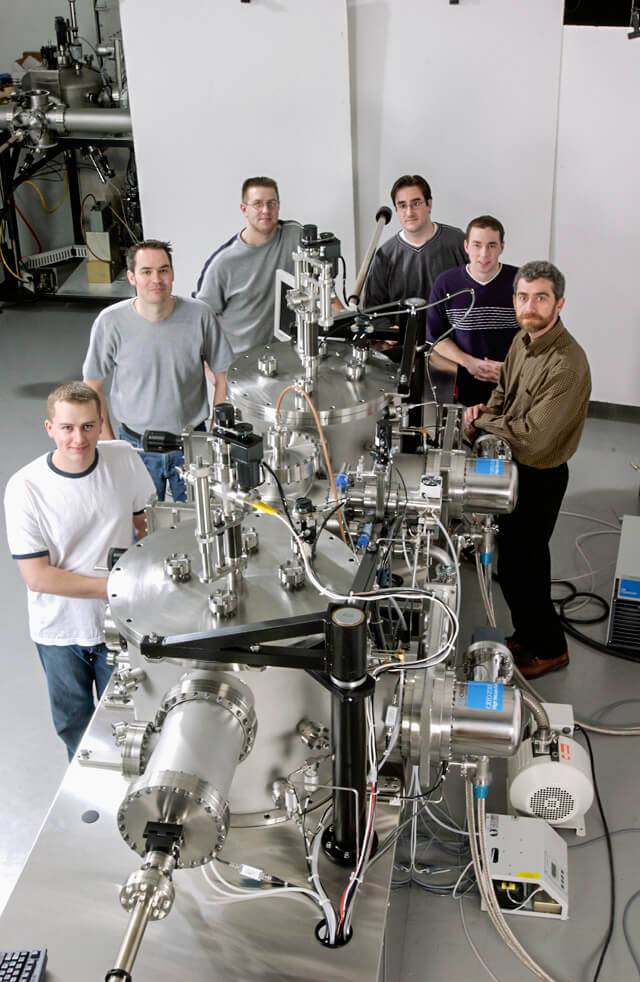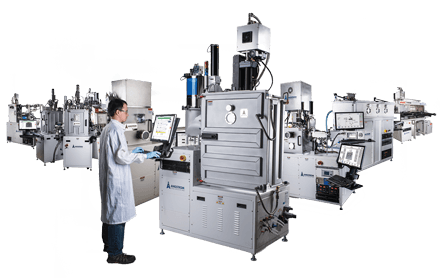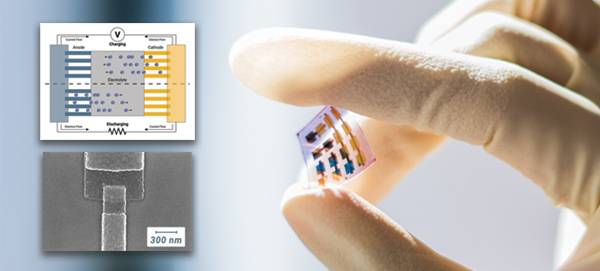July 12, 2017
His phone unexpectedly vibrated in his pocket. He slowed his road-bike, surprised it picked up a call that far out into the southern Ontario countryside. This was a time well before mobile phones became a commodity, so it was a bit more unusual than it would be today. The customer he had seen just the week before in California was calling, needing some help with his brand new thin film deposition system.
“I spent a half hour on the phone with the customer, and we quickly got him up and running. He knew I was having some leisure time and really appreciated the fact that I stopped to make sure he was up and running as soon as possible.”

Andrew Bass, with one of Angstrom’s earlier deposition systems.
Andrew Bass had begun a new venture several years earlier. He was trained as a mechanical engineer and saw a need in the vacuum deposition market for someone to retrofit existing systems with updated parts and tools. Researchers working in this realm measured their work in Angstroms (one-tenth of a nanometer), so he decided to call his new company Angstrom Engineering.
Andrew quickly realized that many of the researchers using thin film deposition systems were having a lot of difficulties with their machines. As an engineer, Andrew saw ways to improve the function of these systems, so he decided to begin making better systems himself. As soon as Angstrom Engineering systems began being used in labs, a vital question arose: “How do we provide service to these systems?”

Sean Campbell, second from left, and Andrew Bass, far right with an early Angstrom system.
The market norm was for system manufacturers to charge a term fee to provide any service. Sean Campbell, one of Angstrom Engineering’s first employees, pushed for a free, and no questions asked service approach. “Instead of creating extra steps to ask simple, quick questions, let’s just provide our customers the support that they need, when they need it.” Going against the grain in this regard was the foundation of what would become a vital piece of Angstrom Engineering’s DNA: unwavering support and service, day or night.
“We gave free over the phone support anytime,” says Andrew Bass. “The other places all required an annual contract, but the researchers and students phoned us, not feeling like talking to us would cost them money. We walked them through technical challenges step by step. They were learning some of the engineering behind the systems we built for them and becoming able to work on the machines themselves.”
With hundreds of systems in the field today, that original DNA is still a part of Angstrom Engineering and Sean Campbell still heads up the service department. Recently, Sean was riding his bicycle and his phone vibrated in his pocket.
He stopped his bike and helped the customer, used to what has become part of his lifestyle. Today’s digitally connected world makes this type of interaction commonplace, and for Sean, helping Angstrom customers takes precedence over almost everything, and the long list of partners – their research ticking along in fully operational deposition systems – are very appreciative.
“It makes an impact on people,” says Bass. “They know the people at Angstrom are willing to stop what they’re doing to help.”
This is part 1 of a 3 part series on the history of Angstrom Engineering, as we celebrate 25 years in business. Andrew Bass retired in 2012, and has since focused his time on athletic pursuits, as well as building intricate wood carved art that double as fully functional time pieces!






